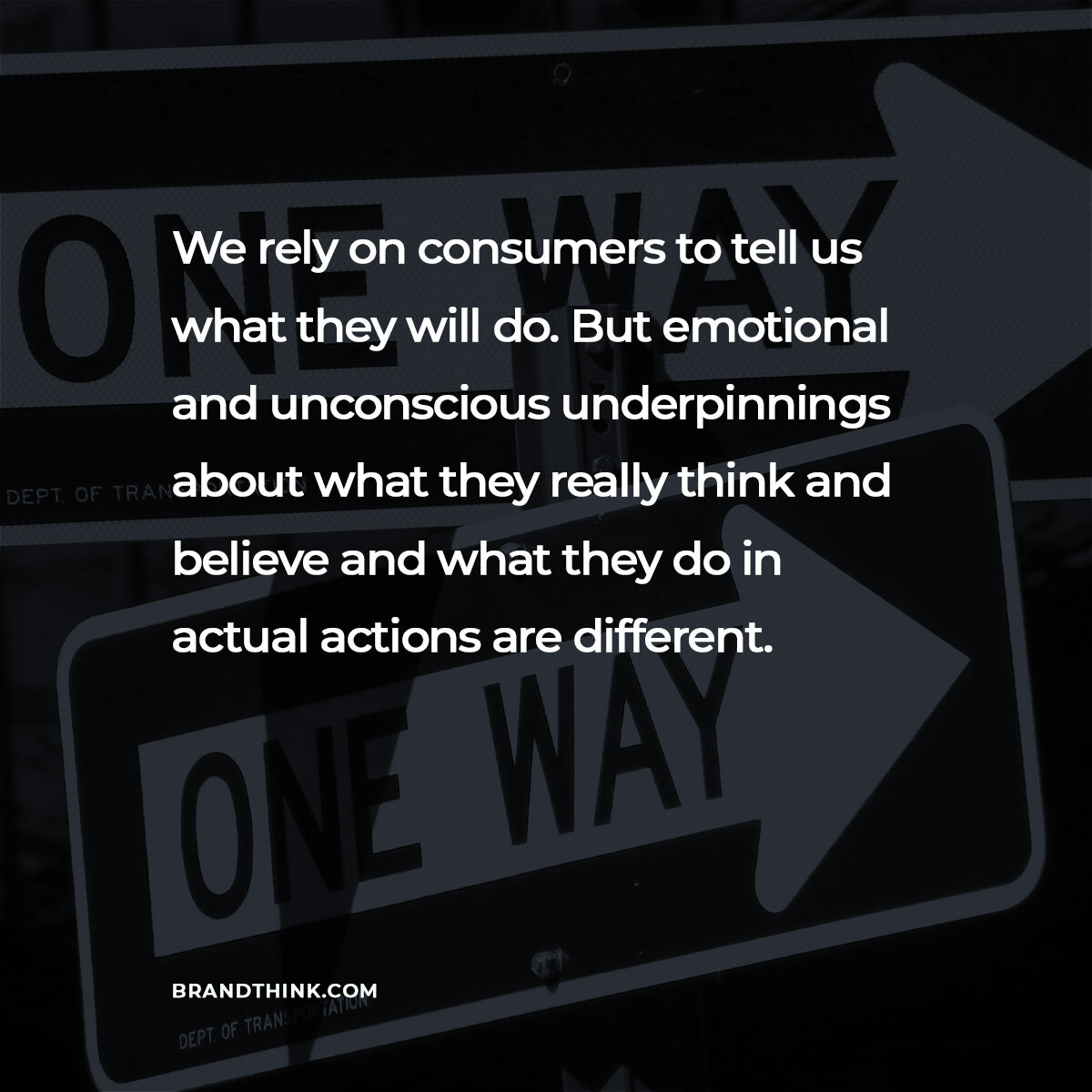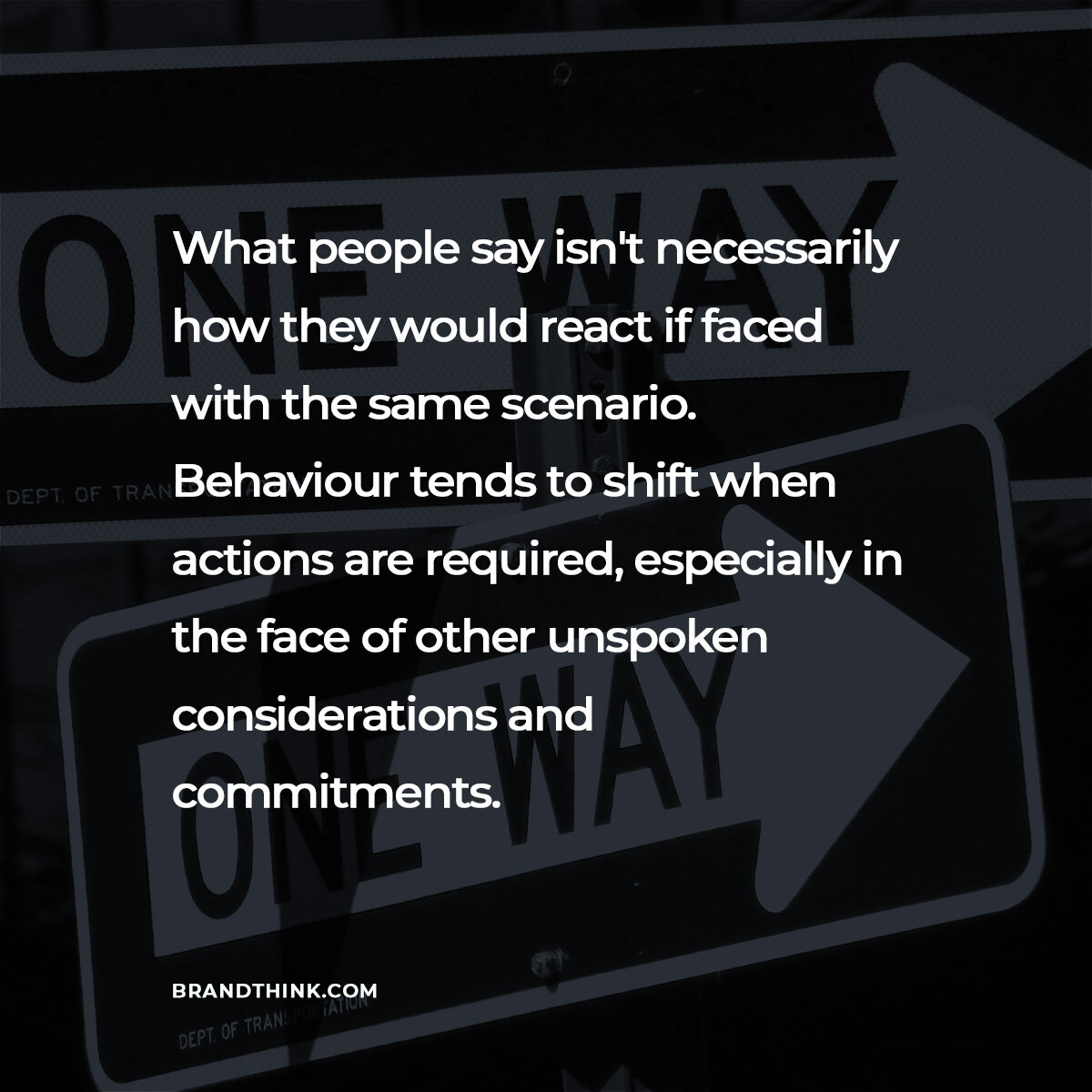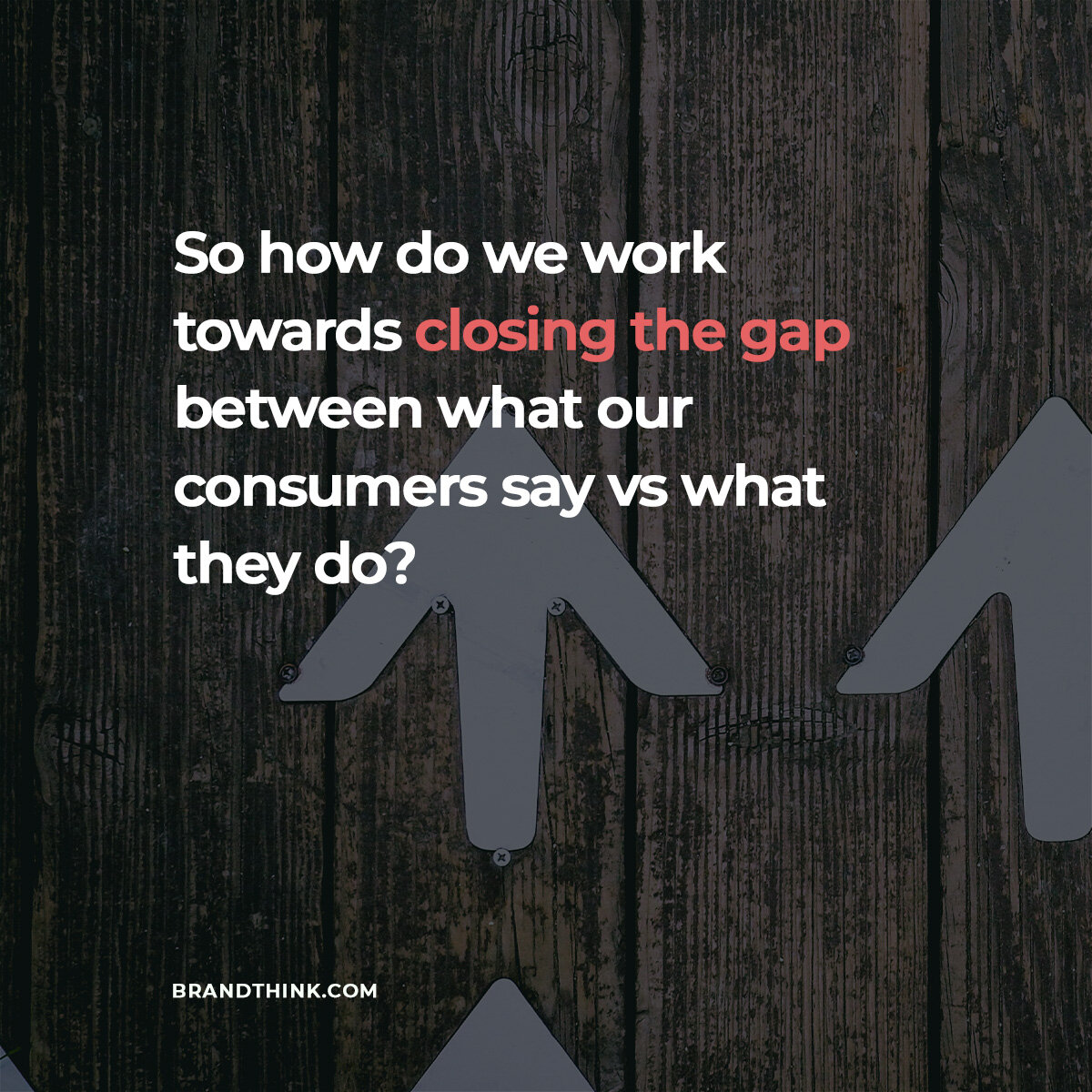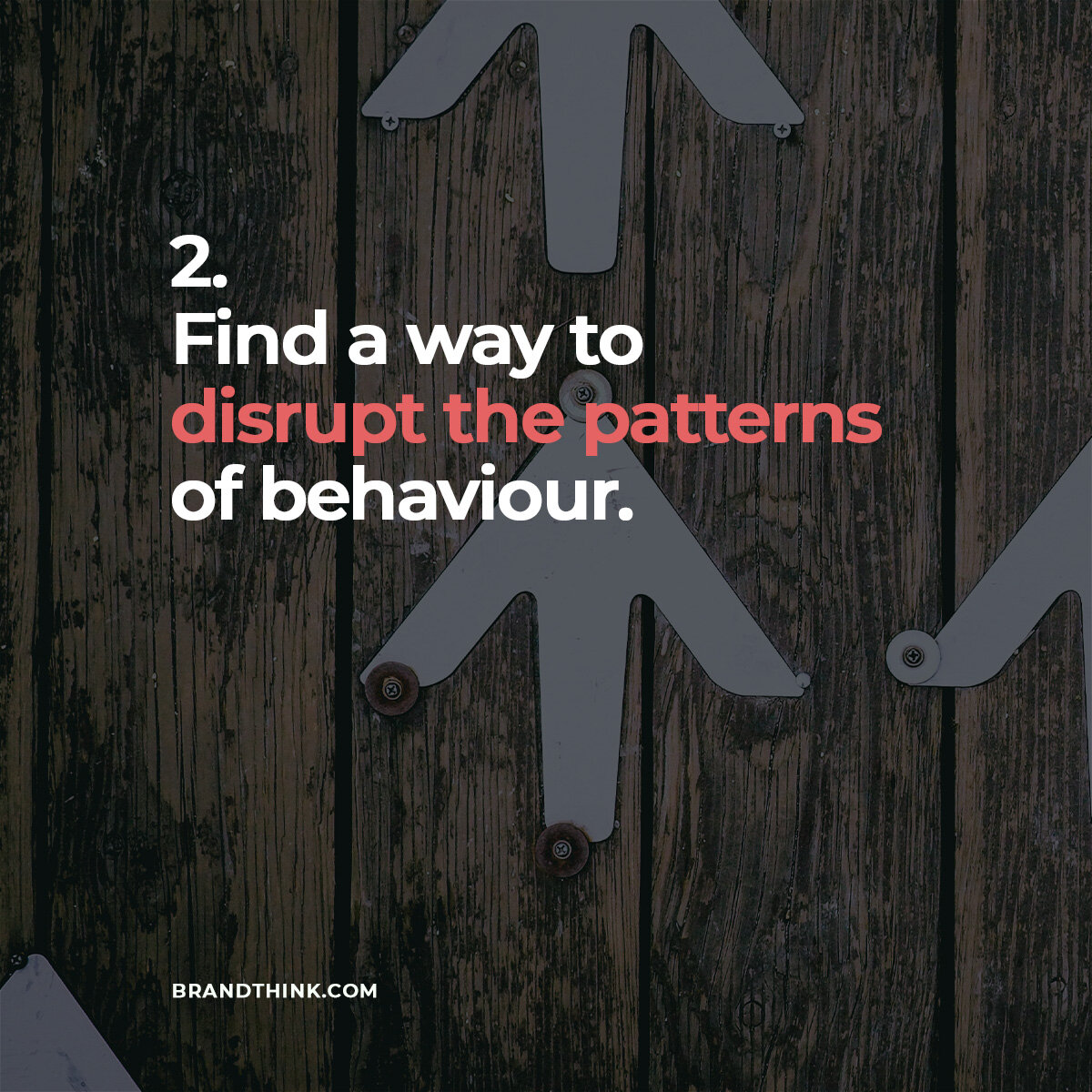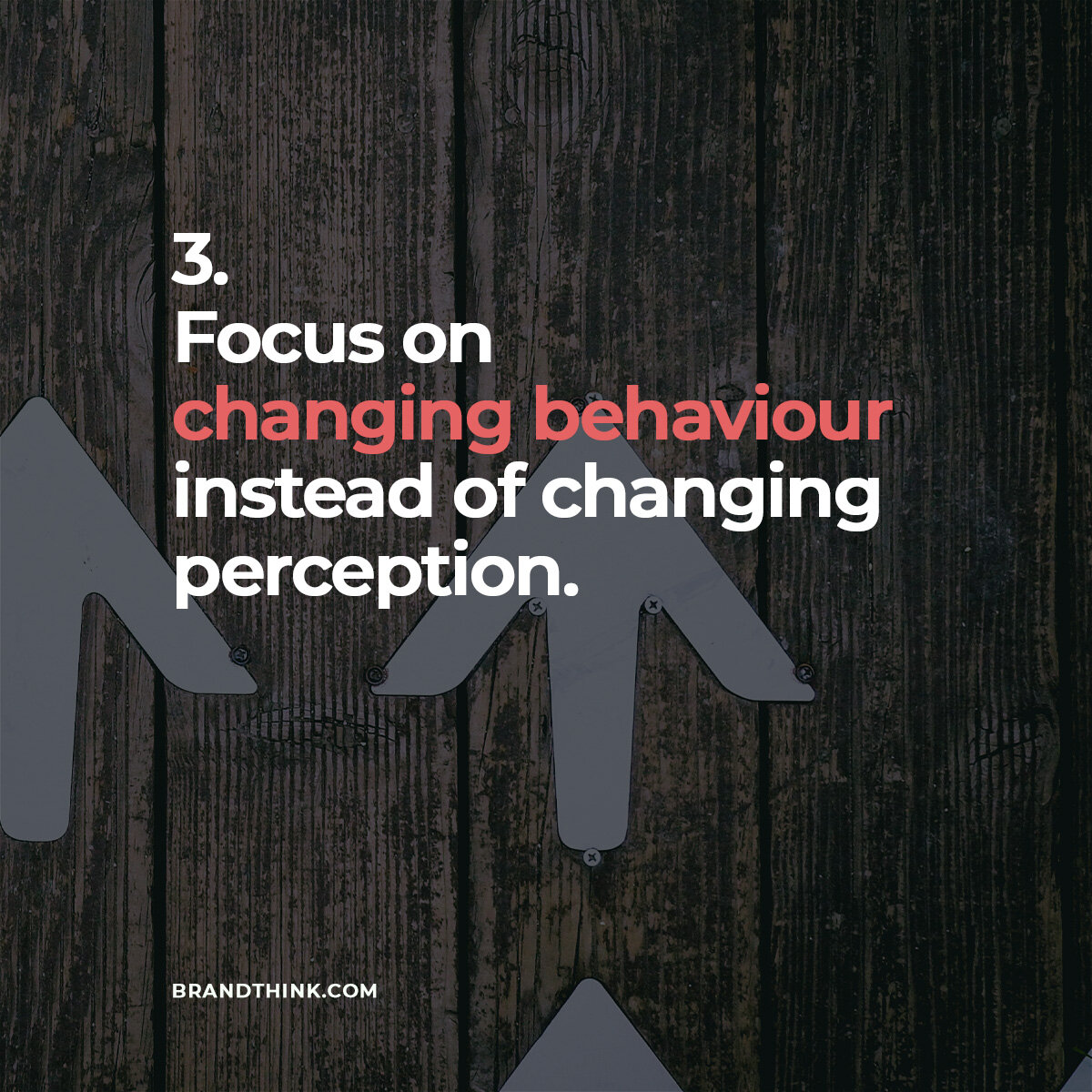Why what people say ≠ what people do
Have you ever wondered why there's a gap between what people say versus what people actually do?
Ask consumers in a research study some questions, and you'll get back answers on attitudes, perceptions and motivations. We form opinions and hypothesis on behavioural patterns based on this. But in real-world practice, responses differ from data on the ground.
For example:
1 - Consider how people will say they want to be healthy, but don't exercise, continue to eat fast food or smoke.
2 - They say they value the importance of sustainability but only do the easy, surface and convenient stuff.
3 - They say they believe in work-life balance but chooses to work all the time.
As marketers, we rely on consumers to tell us what they will do. But emotional and unconscious underpinnings about what they really think and believe and what they do in terms of actual decision-making and actions are different.
This is because what people say isn't necessarily how they react if faced with the same scenario. Behaviour tends to shift when actions are required, especially in the face of other unspoken considerations.
So how do we work towards closing the gap between what our consumers say vs what they do?
1 - Observe and analyse actual behaviour, whether in person or through digital analytics (for online behaviour). Patterns can appear through this.
2 - Actual behaviour is likely a habit and a pattern of inbuilt normality. You may need to find a way to disrupt the patterns of behaviour. Or you may need to find a way to take advantage of that pattern.
3 - Focus on changing behaviour instead of changing perception.
One approach based on this idea is to get people to move slowly in the desired direction, such that they commit to a more minor act first. The idea is that it will be relatively easy to get people to engage in a small behaviour, after which their perceptions of this initial behaviour will change their attitudes, making it more likely for them to engage in a more costly behaviour later. A perfect example of this would be sampling exercises.
Take a small step, disrupt behaviour, change over time.
#WeAreStorytellers





